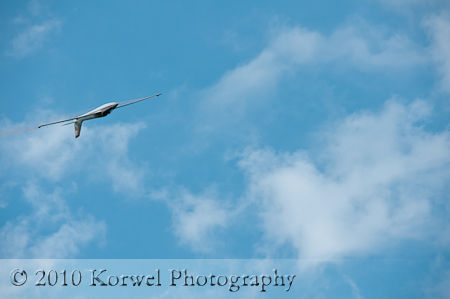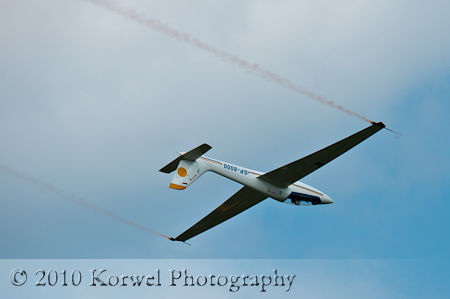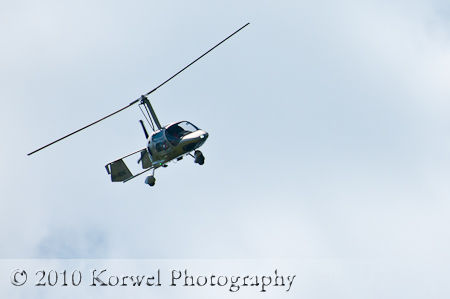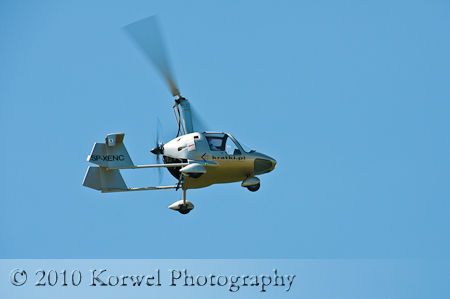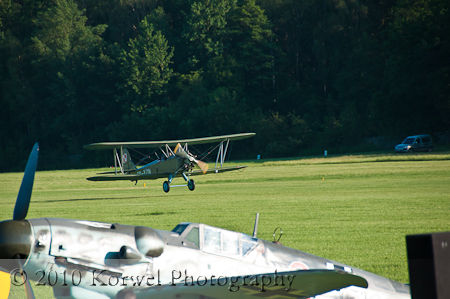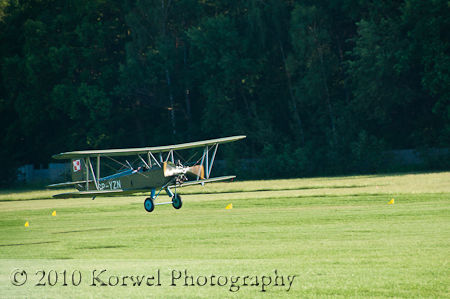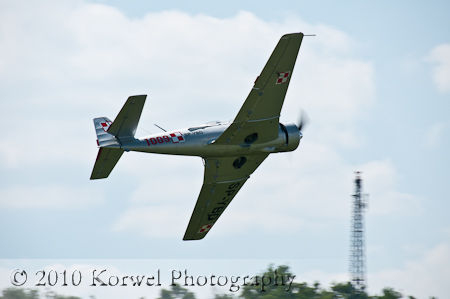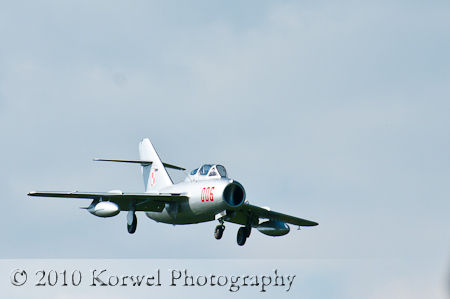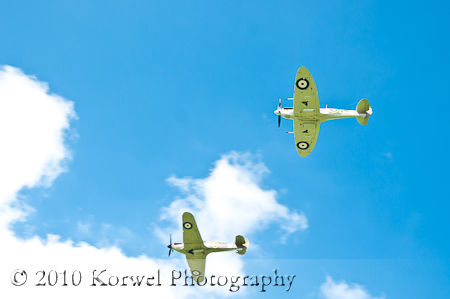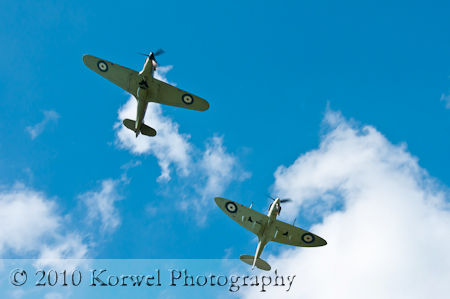How to – photographing air shows
Couple of weekends ago, I spend two very hot and sunny days at a small, private airfield close to Warsaw. It is a place where air picnic “Goraszka” is organized for last 15 years. It was my first time here, in Poland, and fourth air show overall. After great disappointment after last years’ Airventure, photographically, I must have learned some, because I am quite happy with my images this time. And I wrote down few lessons for the future reference.
1) Airplanes don’t look very attractive from far away. Just look at the two images of glider Solo Fox and see, which one you like more. The glider started the show far above, and was lowering its position during the program, enabling me to take better shots.
In my case, 18-200 mm lens was the only choice I had, and I felt it was not enough. I not only looked funny with this lens on the press podium, where the least “pro-looking” guys had 70-300 mm (or whatever Canon equivalent is). But I also think I could have used those 300 mm to sometimes look through the windshield to see pilots face. And 300 mm would be enough, too. Because on the other hand, filling the frame too much often results in missing pieces of the subject ;).
2) Airplanes look better when propeller, if any, is shown in movement. Just look at the difference the moving rotor and the propeller makes between those two images of Xenon gyroplane.
It is good to have a basic knowledge of planes or somebody knowledgable with you. I had at least three people in my company constantly whispering – 1/250 for this one, and you are safe with 1/500 for this one, no propeller there. Or you can just make a few tries to see what works and what doesn’t. You just need to remember about the effect. And use Shutter priority mode on the camera.
But…. 1/250 sec is not a fast enough shutter speed for 200 mm, especially if you don’t have a steady hand.
3) Turn on the burst mode, and just shoot as many images as you/your camera/your card can. According to Scott Kelby’s theory, something in the middle will come sharp. Or sharp enough. At the same time, you have a chance of catching the most interesting moment in the sequence of the events. Or just ensure a better composition or cleaner background, as you can see at the two consecutively shot images of landing CSS-13 Kukuruznik.
4) Train your panning technique. With airplane moving fast in front of you, and rather slow shutter speed, you are introducing additional movement with panning, which can result in blurry image. And good panning will give you an interesting photo, like this one of TS-8 Bies over Goraszka airfield.
5) Airplanes look most interesting when photographed from above and from up front. Obviously. Those are hardest to achieve when you watch the show happening in the air from the earth. But see for yourself the difference between those two shots of the most interesting aircraft of this year Goraszka air show- newly restored LIM-2.
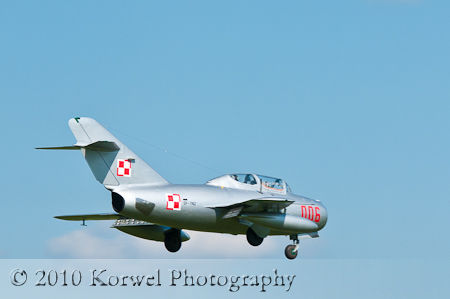
6) The continuous focus is probably your best friend in many air show situations. Although it is not perfect, and will be sliding all over the sky, it will often help getting sharper images, especially combined with burst mode. After all, there are fast moving planes in front of you.
7) With shutter speed limited by propeller movement anyway, you can go up with your aperture. I was using the medium apertures from f/7.1 to f/16, hoping to get better depth of field which would help hiding imprecision of continuos focus. Or situation like in the first shot here, where the other plane came out soft in the common flight of Spitfire and Hurricane.
As you can see from the sample images, I made all the mistakes I could, but I learned and trained it all at the same time. I am sure next air show will give me maybe less then almost four thousnad pictures, and hopefully more than 67 great keepers.
